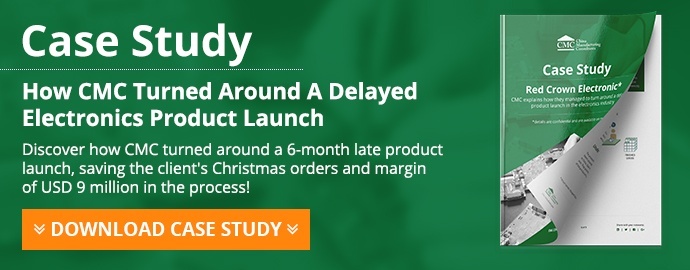Has your company got a New Product Introduction checklist? Or is it trying to follow the APQP process to the letter, to ensure production goes smoothly once it is launched? Beware missing these two key aspects of manufacturing...
Wait. Are You Sure Your New Product Introduction Checklist Is Complete?
Chances are, your people are still focusing too much on the product and not enough on two key aspects of manufacturing:
- In-station and final testing stations
- The impact of product engineering changes on production processes
And yet, any intelligent planning has to integrate these aspects. Here's why:
1. Testing stations
Very often, we see the testing equipment was tested on “phase 1 production” and got outdated as product updates rolled in. They are no longer working as expected, and, in some cases, nobody seems to pay any attention to it.
We always suggest to “test the testing station” by letting a few defective parts/products get to them and see if they are rejected. Do this once a week and you may catch some serious issues.
You think your little company, or your backward industry, is the only one doing this wrong?
Most auto makers are still doing a relatively poor job at this. It takes them a few months to work out all these issues. That’s one reason why Toyota, who gets things right from the start, scores so high on the JD Power surveys… which counts the first 30 days of production of a new model.
This is a big problem with relatively complex pieces of testing equipment.
For example, some visual or acoustic testing stations might take 6 weeks to build and fine-tune! And yet, the building of that test equipment is often left out of the NPI planning.
More generally, in most new product launches, nobody sets the machines correctly in advance and nobody trains the operators on how to use the equipment.
What do the best factories do? They take a few days to make a few products, disassemble them, make them again, and so on… while improving the processes.
2. Process engineering
The electronic industry is very focused on innovating on their products. It makes a huge difference in their marketplace. There is some logic to that.
But, if the software or some hardware parts keep being developed until the last minute, it is going to push the launch back.
We usually don’t see a manufacturing engineer being part of the product development team. That person can make suggestions on small design changes – ‘can you add a little bend here so it’s easy to make, and does it make any change for you?’
That’s the concept of ‘concurrent engineering’ (or simultaneous engineering). By the time the product design is confirmed, the process design should also be confirmed!
Engineering changes might cause the need for a new glue, a new way of burning the software onto the chip, and so on. The new process might take 3 months to get right!
These 2 aspects are ignored by most companies!
You might want to make sure they are included in your NPI / APQP checklist, or in your PPAP checklist if you are on the buyer’s side.
***
Have you noticed the same shortcomings before in your business? What do you think? Please let me know by leaving a comment.





